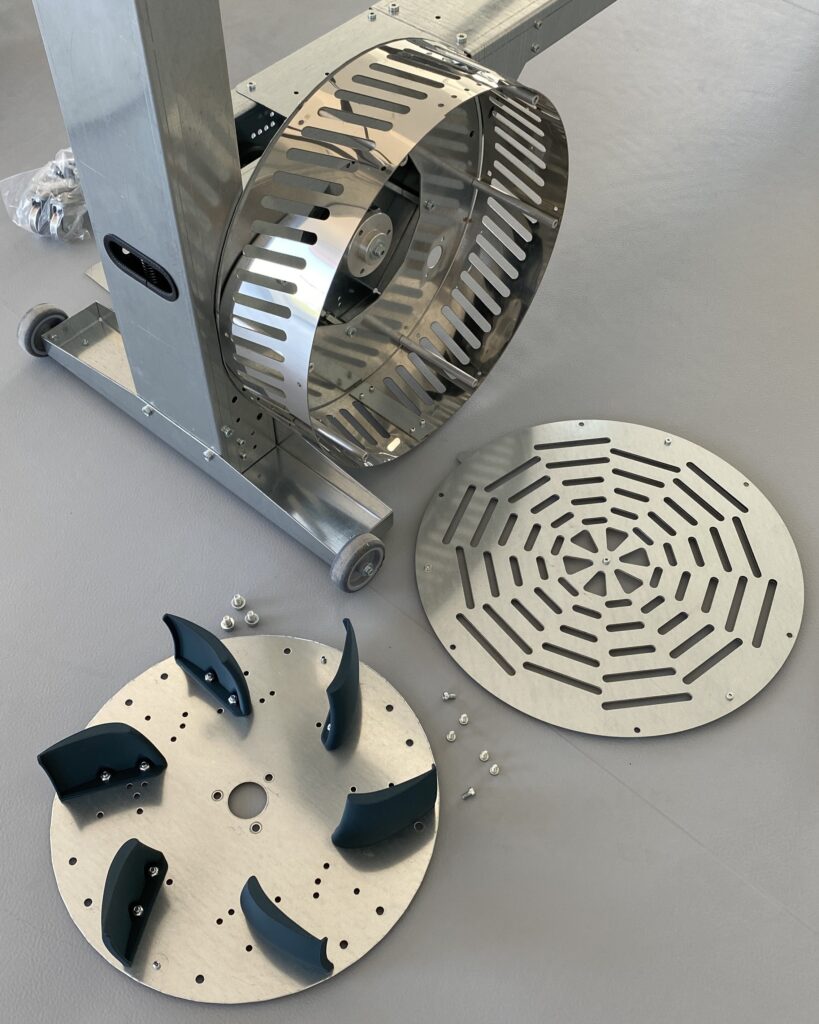The most important goal of the design of the Old Danube ergometers is to ensure that the exercises carried out on them are the most life-like, stressing the same muscles as when paddling on water.

The experience of paddling is affected by all mechanical parts that come into contact with the rope threaded through the machine. The two ends of the rope are attached to an adjustable length carbon paddle shaft. The material and length of the shaft are also very important. The light weight of the carbon shaft also helps to reduce unwanted load, but its flexibility is even more important to dampen the sudden impact of force when catching water. The length of the shaft basically affects the feeling of paddling, because the ratio of the distance between the lower and upper hands and the rope determines the proportion of the arms that can participate in the pull. When paddling on water, the pressure of the water on the feather of the paddle can be replaced as a point-like force by the force acting at the center of gravity of the surface. The location of this point must coincide with the location of the rope, this determines the length of the appropriate paddle shaft.

When paddling, the position of the rollers that guide the rope is very important, because it affects the angle between the rope and the shaft, together with the direction in which the athlete moves the shaft. These two rollers are near the center plane of the machine on the Old Danube ergometer to help give feedback to the kayaker to guide the end of the paddle away from the body after catching water. The height of the rollers can be adjusted, because the higher rollers help to make the load that occurs when catching water more realistic, and the lower setting makes the core muscles work better in the second half of the pull. The different settings cater to kayakers with different techniques, according to which phase of the pull they exert the greatest pulling force.
The air-brake flywheel provides the determining part of the resistance exerted on the athlete by the exercise machine. The mass of the flywheel and its resistance depending on the speed of rotation must also meet the parameters of the athlete. For heavier kayakers, a flywheel with greater inertia gives a true-to-life paddling experience, which is why every Old Danube ergometer is made with a replaceable flywheel, as well as a driveshaft attachment and cover that facilitate quick replacement in a few minutes. The air resistance flywheel cover helps regulate the amount of air flowing through. Depending on the increase in speed, the air resistance must increase to the same extent as when rowing on water, this is helped by uniquely designed rotor blades in the shape of a wing profile.
Rope retraction is tensioned with a steel spiral spring, so the set retraction force does not decrease even months later, in contrast to ergometers that work with a rubber rope. The rope’s own properties are also important for the operation of the machine. We chose a rope that has little stretch, a wear-resistant surface and is not rigid, it can be easily bent so that it does not slow down the machine’s movement when pulled through the pulleys. When disassembling the kayak ergometer into two pieces for transport, the rope stays in place because the retracting mechanism is entirely in the front part of the machine.
